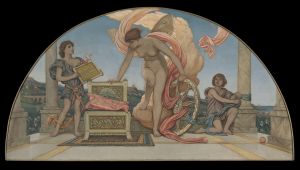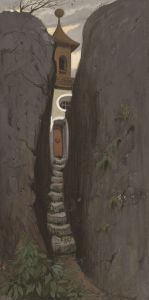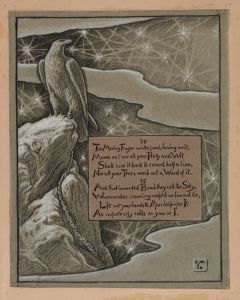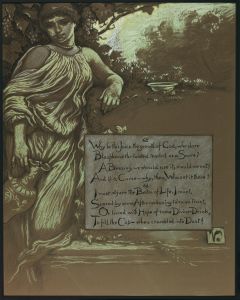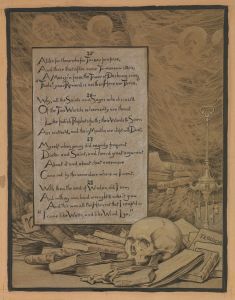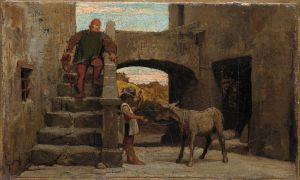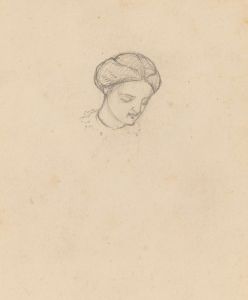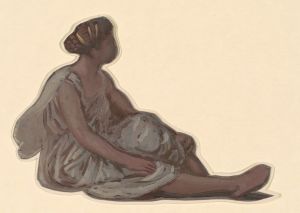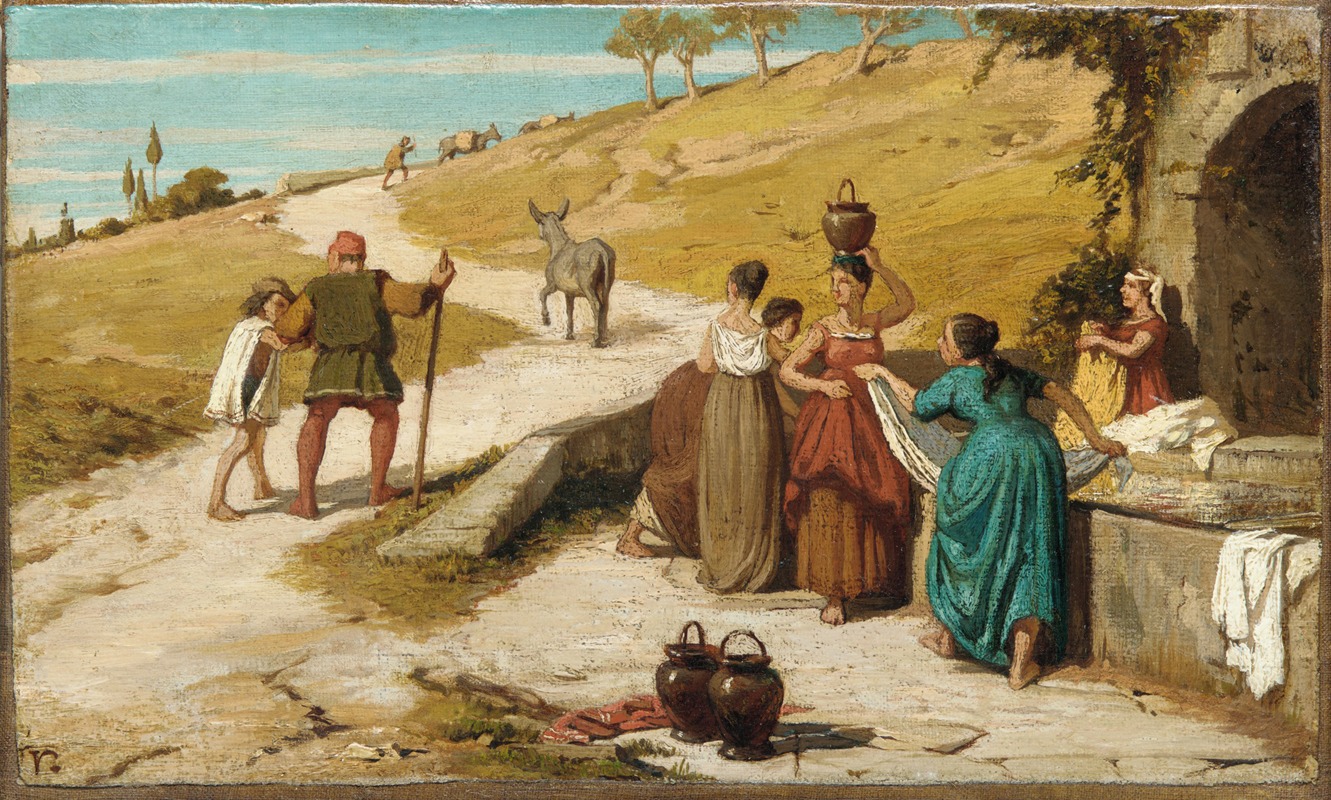
The Fable of the Miller, His Son, and the Donkey No. 2
A hand-painted replica of Elihu Vedder’s masterpiece The Fable of the Miller, His Son, and the Donkey No. 2, meticulously crafted by professional artists to capture the true essence of the original. Each piece is created with museum-quality canvas and rare mineral pigments, carefully painted by experienced artists with delicate brushstrokes and rich, layered colors to perfectly recreate the texture of the original artwork. Unlike machine-printed reproductions, this hand-painted version brings the painting to life, infused with the artist’s emotions and skill in every stroke. Whether for personal collection or home decoration, it instantly elevates the artistic atmosphere of any space.
Elihu Vedder's "The Fable of the Miller, His Son, and the Donkey No. 2" is an artwork that draws inspiration from one of Aesop's well-known fables. Elihu Vedder, an American symbolist painter, is recognized for his imaginative and often allegorical works that explore themes of morality, human nature, and the complexities of life. This particular painting is part of Vedder's broader body of work that frequently delves into literary and mythological themes.
The fable itself tells the story of a miller and his son who, accompanied by their donkey, set out to sell the animal at the market. Along the way, they encounter various groups of people who criticize them for how they choose to travel with the donkey. Initially, the miller and his son walk alongside the donkey, but they are criticized for not riding it. When the son rides the donkey, they are scolded for not letting the elder miller ride. When the roles are reversed, they face criticism again. Finally, when both ride the donkey, they are chastised for overburdening the animal. In an attempt to please everyone, they end up carrying the donkey, which leads to a disastrous conclusion when the donkey falls into a river. The moral of the story is the futility of trying to please everyone and the importance of making one's own decisions.
Vedder's interpretation of this fable likely captures the essence of its moral lesson, using his distinctive style to convey the narrative's themes. His work often features a blend of realism and fantasy, with meticulous attention to detail and a focus on the symbolic elements of the story. Although specific details about this particular painting, such as its creation date or its current location, are not widely documented, it is consistent with Vedder's interest in exploring philosophical and moral questions through art.
Elihu Vedder was an influential figure in the American art scene during the late 19th and early 20th centuries. Born in 1836, he spent a significant portion of his career in Italy, where he was part of the expatriate art community. His works are characterized by their dreamlike quality and often incorporate elements of mysticism and symbolism. Vedder's art was well-received during his lifetime, and he remains a respected figure in the history of American art.
"The Fable of the Miller, His Son, and the Donkey No. 2" exemplifies Vedder's ability to translate literary themes into visual art, inviting viewers to reflect on the underlying messages and moral questions posed by the fable. While specific exhibitions or collections featuring this painting are not extensively recorded, Vedder's works continue to be studied and appreciated for their depth and artistic merit.





